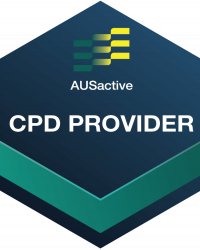Reformer Repertoire
Feet in Straps:
Short Spine Massage
Alternate Names
Short Spine
Derived From
Classical Reformer: Feet in Straps: Long Spine Massage and Mat Pilates: Overhead
Primary Element
Mobility
Why for Primary?
To build spinal articulation and hip mobility in deep flexion.
Secondary Element
Stability
Why for Secondary?
The Feet in Straps series builds on the Footwork series and challenges pelvis stability whilst continuing to use the larger muscle groups of the legs.
Tertiary Element
N/A
Why Tertiary?
N/A
Repetitions
8-10
Apparatus Setup
Suggested springs
- Number system: 1.5 springs
- Colour system: 2 x red springs + 1 blue spring
- Resistance: medium
Headrest position flat unless any neck issues or the client feels more supported with the head lifted using the headrest or a slightly deflated Pilates ball or cushion. If that’s the case don’t lift the hip up any higher than a few centimetres off the carriage so as not to load onto the neck, in more of a ‘nappy lift’ movement.
Foot bar one position is set at one position down from vertical, or on many Reformers the top angled position.
Plane of Motion
Sagittal
Targeted Muscles
To connect with, activate and develop the pelvis stabilisation muscles the focus is on gluteus medius and gluteus maximus and the deep abdominal muscles transversus abdominis.
To create the external rotation at the pelvis gluteus medius, minimus and tensor fasciae latae are working to create and maintain the abduction throughout the exercise.
The hip flexor muscles, psoas, illiacus and rectus femorus, as well as the abdominal muscles, are working on the lifting-up phase of the movement. They are also working on the return phase eccentrically to control the torso back down towards the carriage.
The hip extensors or muscles which open or lengthen the front of the hip and move the legs downwards or backwards are working to press the legs down back to the 45-degree start position at the end, and include
- Gluteus maximus
- Posterior head of the adductor magnus
- Hamstrings
Warnings
Not suitable for some hip, pathologies where flexion is contraindicated, or if the client is unable to work in a pain free range of motion during the exercise. Also may be unsuitable for clients where abdominal activation and external rotation are contraindicated. Technically an inversion exercise the idea is to lift to the shoulder girdle, not loading the neck, but it may be unsuitable for clients with head and shoulder issues or injuries.
Execution
Lie supine on the Reformer in a neutral pelvis position and place the feet into the straps (over the arch of the foot) and straighten the legs at a 45 degree angle to the carriage, without any tilting of the pelvis. Externally rotate the hips and softly plantar flex the feet.
Inhale to lift the legs towards a 90 degree angle, keeping the pelvis neutral and the tailbone anchored to the carriage. Exhale to engage the transversus abdominis and lift the pelvis up and just off the carriage (nappy lift variation stop here) before continuing and coming onto the shoulder girdle. Inhale, bend the knees to allow the thighs to come to the shoulder blocks with control flexing at the hips. Exhale, articulate the spine down to the carriage and press the legs out straight, back to the start position.
Observations
Do a body scan of the client taking note of the following points
- Pelvis
- Are the hip bones even horizontally or is the client hitching, leaning towards or biasing one side?
- Can the client use their abdominals to initiate the lift of the pelvis and legs up and overhead?
- Can the client identify when to stop lowering the legs downwards? I.e. before the pelvis starts to rock forwards into an anterior tilt with an arch in the lumbar spine?
- Legs
- Are the legs able to reach up and overhead, staying connected and engaged?
- On the bend of the knees to the shoulder blocks movement, can the client do this with control without dropping the knees downward?
- Feet
- Are the fleet softly dorsiflexed with the ankles connected throughout the movement?
- Apparatus
- Is the head rest flat?
- Is there tension on the springs the whole time? Or is the carriage crashing to the stopper or ‘park’ indicating a lack of control and a push by the client beyond their ideal range of motion? If the carriage is crashing encourage the client to reduce their range of motion and slow their movement down to focus on controlling the return phase, or reduce the spring load so the client can control the springs.
Learning Style Technique Cues
Auditory – word associations that connect mind and body
- Keep the movement smooth and continuous
- Lift the hips up, then reach the legs overhead
- Draw the knees towards the shoulder blocks
- Say the client’s name when you’re about to interact with them
Visual
- Imagine pressing the legs down from the back of the legs or hamstrings
- You may demonstrate a part of the movement as a visual representation for the client to see using your arms in the air
Kinaesthetic
- Feel each vertebrae come into contact with the carriage before bringing the next one down.
- Feel the femur (thigh bone) drawing back into the pelvis or hip socket, activating the iliacus muscle and creating a feeling of control through the movements
Modifications and Variations
Regress the exercise by
- Increasing the spring setting to two red springs for more support and assistance with lifting the legs up and overhead
- Reducing repetitions and/or pace
- Placing a slightly deflated Pilates ball or foam roller under the pelvis to lift the pelvis higher so there’s not as far to lift up and overhead. A 90 cm foam roller placed horizontally works well, hands holding onto the ends of the roller to keep it in place
- Reducing the range of motion so the client can focus on the nappy lift phase of the movement only, to use transversus abdominis to help lift the pelvis upwards, before lifting higher and reaching the legs overhead
- Working on Feet in Straps: Double Leg Lowers and Warm Up: Pelvic Curl for spinal articulation
Progress the exercise by
- Decreasing the springs to one red spring to further challenge pelvis stability
- Working towards: Feet in Straps: Long Spine (Intermediate repertoire not in this course)
- Bending the elbows with the fingers towards the ceiling to reduce the shoulder girdle support, or one step further reaching the arms towards the ceiling but maintaining a connection between the shoulder blades
- Straightening the legs as the spine starts to return towards the carriage, in essence uncurling like a fern or shell and moving from a ball shape to lengthened out through the spine and legs. Ideally the tailbone touches as the legs reach their straightest position, pressing down from the hamstrings or back of the thighs to finish the movement
Series and Transitions
This exercise is part of the Feet in Straps series which includes a range of other foot positions in the fundamental and the progressive repertoire. The Feet in Straps series can also be found in the Cadillac repertoire.

